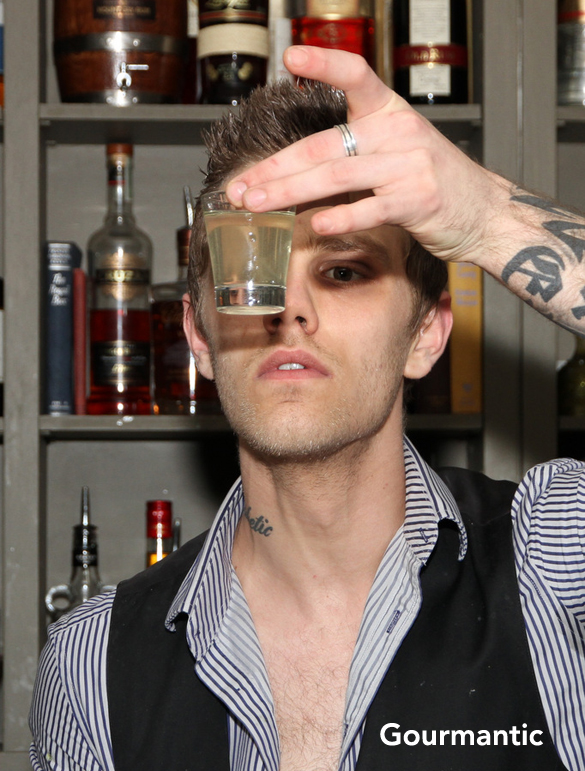 Watching Doug Laming at work, you could easily imagine him in a starched lab coat conducting science experiments well into the night. At Rabbit Hole Bar & Dining, the bar is his lab and his countless hours of research and experiments have led to inventions with molecular cocktails including a world first rum powdered cocktail.
Watching Doug Laming at work, you could easily imagine him in a starched lab coat conducting science experiments well into the night. At Rabbit Hole Bar & Dining, the bar is his lab and his countless hours of research and experiments have led to inventions with molecular cocktails including a world first rum powdered cocktail.
I have met Doug on a few notable occasions, and when he talks molecular science, he makes chemistry sound exciting. In this interview, we chat about his beginnings, his creative inventions and in an exclusive first to Gourmantic, he reveals his Martini Magic cocktail.
~ ~ ~ ~
Corinne: Tell us a little about yourself, where you were born, where you grew up.
Doug: Well, I’m 25 years old and a Novacastrian. I spent my first 19 years in Newcastle before going for a new job interview after 1st year uni (ambling around unsure what to do – my plan to be James Bond wasn’t coming to fruition as quickly as I would have liked) for the interviewer to tell me I would be better to suited to Sydney. We moved around a lot when I was younger but before leaving found a home by the beach in Merewether.
C: How long have you been bartending?
D: I have been bartending for 7 years. I started shortly after turning 18, down the dodgy end of Beaumont St. Hamilton in a pub/nightclub.
C: How did you become interested in molecular mixology?
D: I’m unsure exactly how I became interested in molecular mixology. I know I learned the term after I started producing cocktails that played with the ideas. Most bartenders have, even layered drinks are forms of molecular mixology; you’re relying on the differing viscosity of liquids or egg whites in sours to change density and mouthfeel due to their protein bonds. My interest has really been pushed since learning the term and what it meant and the subsequent investigation deeper into it. This was a way that I could push myself when behind the bar into something new and a search for new flavours and ways to appreciate them. It wasn’t like I fell into it, but rather pushed myself into it and wanted to learn more.
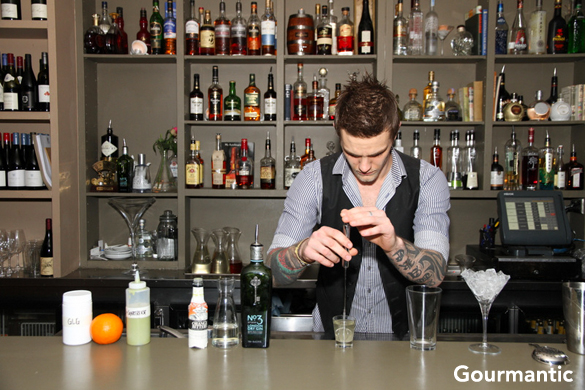
Doug Laming, Rabbit Hole Bar & Dining
C: Did you have any formal training, a mentor, or assistance from anyone in Australia or abroad?
D: No. I have learned along the way after mistakes and many questions asked.
C: You opened Rabbit Hole Bar & Dining almost one year ago with your partner Georgie Dodds. Was it always your intention to have bar with a molecular focus?
D: Yes it is coming up to a year now. Wow – time flies! And yes, absolutely, it was our intention. I had been holding onto various ideas or recipes that I had been collecting for a little while (and not wanting to give them up to a company) and with the outlet and freedom of a venue of our own it allowed me to pour myself into it. I wanted to be able to give Sydney and Australia something new and different than what they had come to expect.
C: In your cocktail, Doug Laming’s Margarita, you use caviar spherification to create spheres of Tequila, Cointreau and syrup. In simple terms, tell us how spherification works.
D: As with all science there are a plethora of really big words when trying to describe this process; the simplest and the way I like to think of spherification is cold cooking. It also sounds a lot better than a continuous chemical reaction. It works basically as a reaction between polysaccharide and calcium salt.
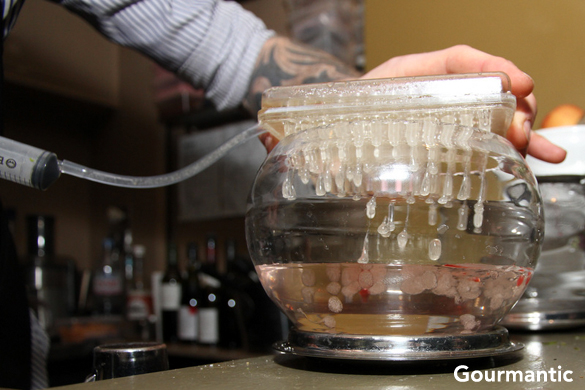
Tequila Spheres
Normal spherification works with one liquid, thickened and enriched with the Sodium Alginate (and at the right PH level) so that it is dense enough to pierce the bath of the other liquid that is enriched with a calcium salt. With the first liquid you have created a hydrocolloid (a substance that forms a gel in the presence of liquid) that when comes in contact with the Calcium “cold cooks” the outside by firming the gel. The type of calcium salt decides whether you need to rinse or not.
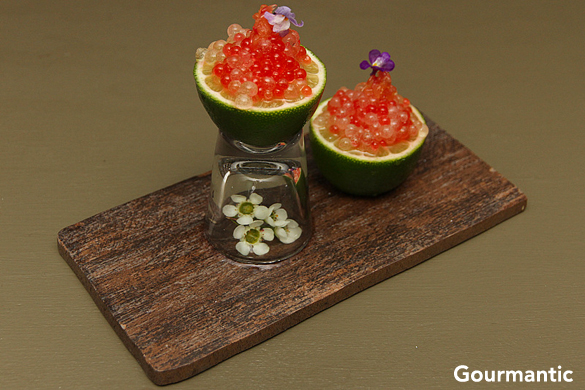
Doug Laming’s Margarita
C: Let’s talk about that cocktail, the Martini Magic.
D: The Martini Magic is made possible by a new type of calcium salt that imparts no taste or bitterness to the liquid it is being applied to. And the fact that we can achieve dispersion in a straight alcohol mix. Basically, what that means is we can make a delicious gin martini that also doubles as calcium bath with no taste added by the calcium. We have simplified this process down so that we can make them in the same time you would receive a quality martini anywhere else.
Pause and take spherification back to invention in ’03 from El Bulli and we see reverse spherifical olives coming from their kitchens. We needed to take their original olive recipe and switch it back to normal spherification and we added some green Chartreuse for flavour.
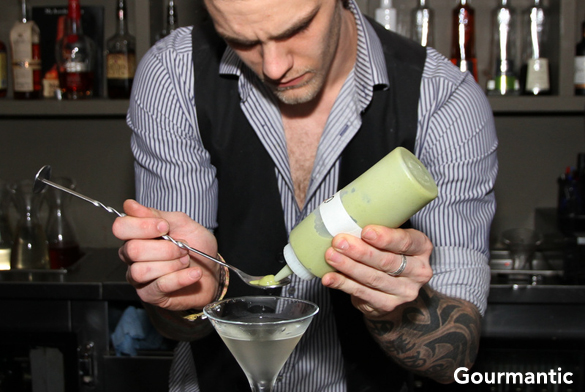
The Making of the Olive
Now back to the present and you can watch us drop a liquid into the centre of your martini and by the time you have finished you can pick up the newly solid olive and pop it in your mouth. I love this cocktail because of how perfectly logical it is from the history of spherification and the olive to this martini and how linear the growth is.
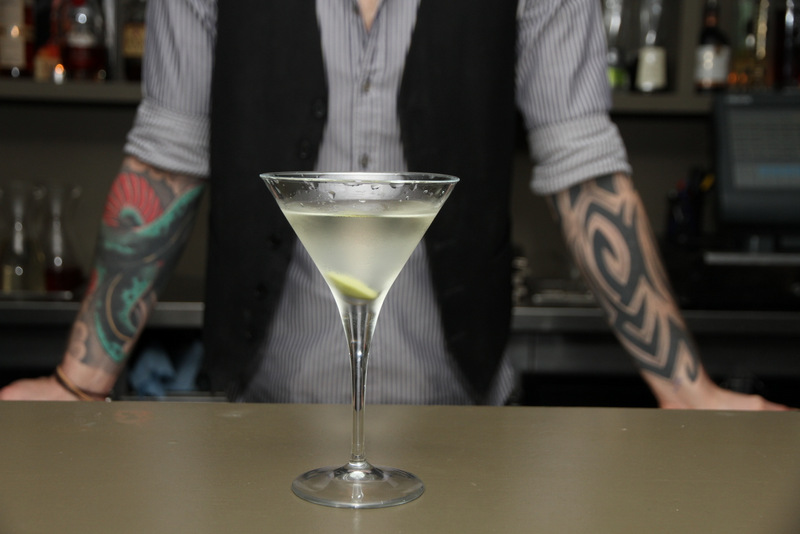
Magic Martini with Spherified Olive
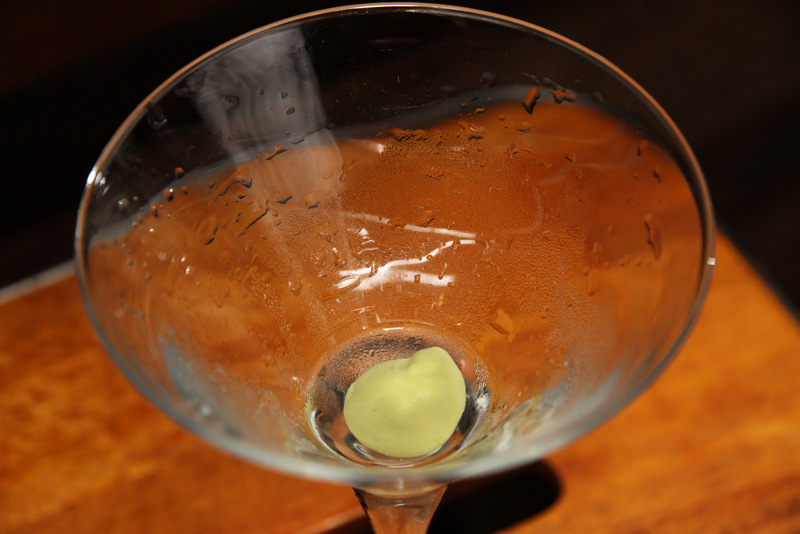
The Spherified Olive in the Martini
C: What is your proudest creation to date?
D: That’s a very hard question to answer. Every cocktail that I create has come from an experience somewhere. I have lent my name to the margarita we make at the Rabbit Hole, so that one is definitely high up on the list but I think lately with the creation of powdered rum at 40% ALC and the ability to make powdered cocktails has eclipsed it.
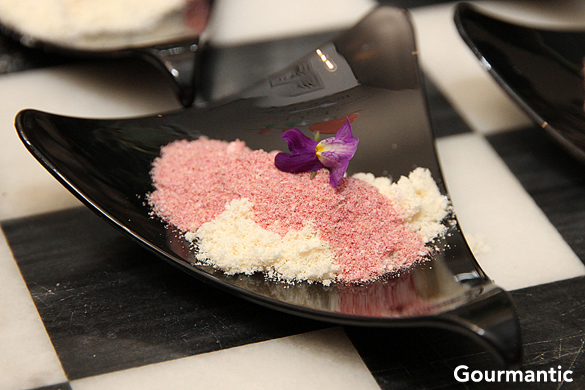
Painkiller Powder
C: Where do you see molecular mixology going in the next 3 to 5 years?
D: This could be as broad as the imaginations of anyone out there. We are making drinks at the end of the day, or at least finding delicious ways to have our alcohol and that has to be the prime objective: to make the consumption as delicious as possible and beyond that to make it an experience. I’d like to see more “plated” cocktails where the bartender has time to show his/her artistic capability.
Lately, I have been interested in bioluminosity and its availability to cross over into the food/bar industry. What that is the ability for a living being to produce cold light. But bioluminosity is actually a result of a chemical process of special cells called photospheres which contain Luciferin which when oxidised creates luminosity. Imagine having a cocktail that literally lit up like stars throughout your drink. Or stirring a cocktail into a literal galaxy of light. Now that would be an experience.
C: Where can we find you when you’re not behind the bar?
D: In an office, behind a laptop, number crunching with a calculator! It’s my first year owning/operating a bar and it is a constant workload! But when I am in the bar, it’s my second home, or first now…. I don’t know where I spend more time! I do know that I miss sleep.
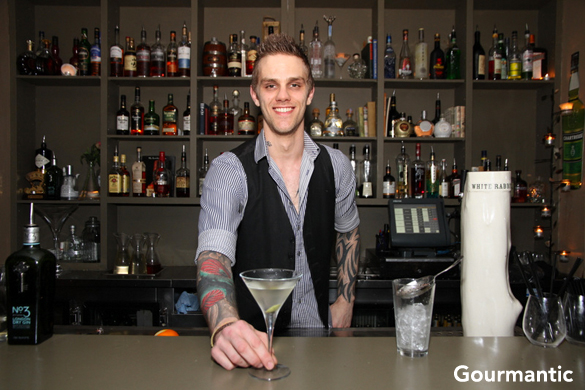
Doug Laming with the Martini Magic
With thanks to Doug Laming and Georgie Dodds for their time.
~ ~ ~
The Martini Magic is made with No. 3 London Dry Gin (featured in our Top 10 Gins), orange bitters, a little sugar syrup and a flavourless calcium powder. With a balanced flavour that has citrus elements, it is a “soft style” Martini that is surprisingly easy-drinking. As you work your way through the drink, the olive has been permeating with the Martini then the magic happens. When you put it in your mouth, the olive will burst with a long lingering flavour that will make you want to immediately order another.
The Martini Magic cocktail is available at The Rabbit Hole Bar & Dining from the first week of September.
Photography © by Kevin Burke for Gourmantic – Copyright: All rights reserved.


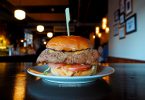

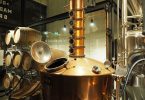

[…] in late September 2012, owners Doug Laming and Georgie Dodds have set to create a CBD venue with a difference. The bar is one of two in […]
[…] underground Sydney bar is owned by Doug Laming, whom we interviewed last year showcasing his molecular mixology talents, and his partner, Georgie […]
[…] Rabbit Hole Bar & Dining has launched a new and inventive cocktail list in time for spring. The basement level bar along Sydney’s Elizabeth Street is renowned for spherification and molecular techniques of co-owner and cocktail bartender, Doug Laming. […]
[…] at the Rabbit Hole bar, start your evening with the Martini Magic and warm up with Wood and Smoke, with the seductive aroma of cinnamon in a mix of Auchentoshan 3 […]
[…] had it smoky, bottled and poured into a chilled glass. You’ve even had it nitro-chilled with a spherified olive. Now get ready to enjoy your martini out of a […]
[…] the bartender competition were Doug Laming (Rabbit Hole Bar), Jason Soto (Assembly Bar) and Corinne Mossati […]